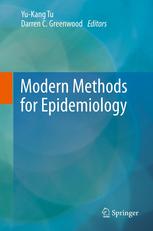

Most ebook files are in PDF format, so you can easily read them using various software such as Foxit Reader or directly on the Google Chrome browser.
Some ebook files are released by publishers in other formats such as .awz, .mobi, .epub, .fb2, etc. You may need to install specific software to read these formats on mobile/PC, such as Calibre.
Please read the tutorial at this link: https://ebookbell.com/faq
We offer FREE conversion to the popular formats you request; however, this may take some time. Therefore, right after payment, please email us, and we will try to provide the service as quickly as possible.
For some exceptional file formats or broken links (if any), please refrain from opening any disputes. Instead, email us first, and we will try to assist within a maximum of 6 hours.
EbookBell Team

4.4
12 reviewsRoutine applications of advanced statistical methods on real data have become possible in the last ten years because desktop computers have become much more powerful and cheaper. However, proper understanding of the challenging statistical theory behind those methods remains essential for correct application and interpretation, and rarely seen in the medical literature. Modern Methods for Epidemiology provides a concise introduction to recent development in statistical methodologies for epidemiological and biomedical researchers. Many of these methods have become indispensible tools for researchers working in epidemiology and medicine but are rarely discussed in details by standard textbooks of biostatistics or epidemiology. Contributors of this book are experienced researchers and experts in their respective fields. This textbook provides a solid starting point for those who are new to epidemiology, and for those looking for guidance in more modern statistical approaches to observational epidemiology. Epidemiological and biomedical researchers who wish to overcome the mathematical barrier of applying those methods to their research will find this book an accessible and helpful reference for self-learning and research. This book is also a good source for teaching postgraduate students in medical statistics or epidemiology.